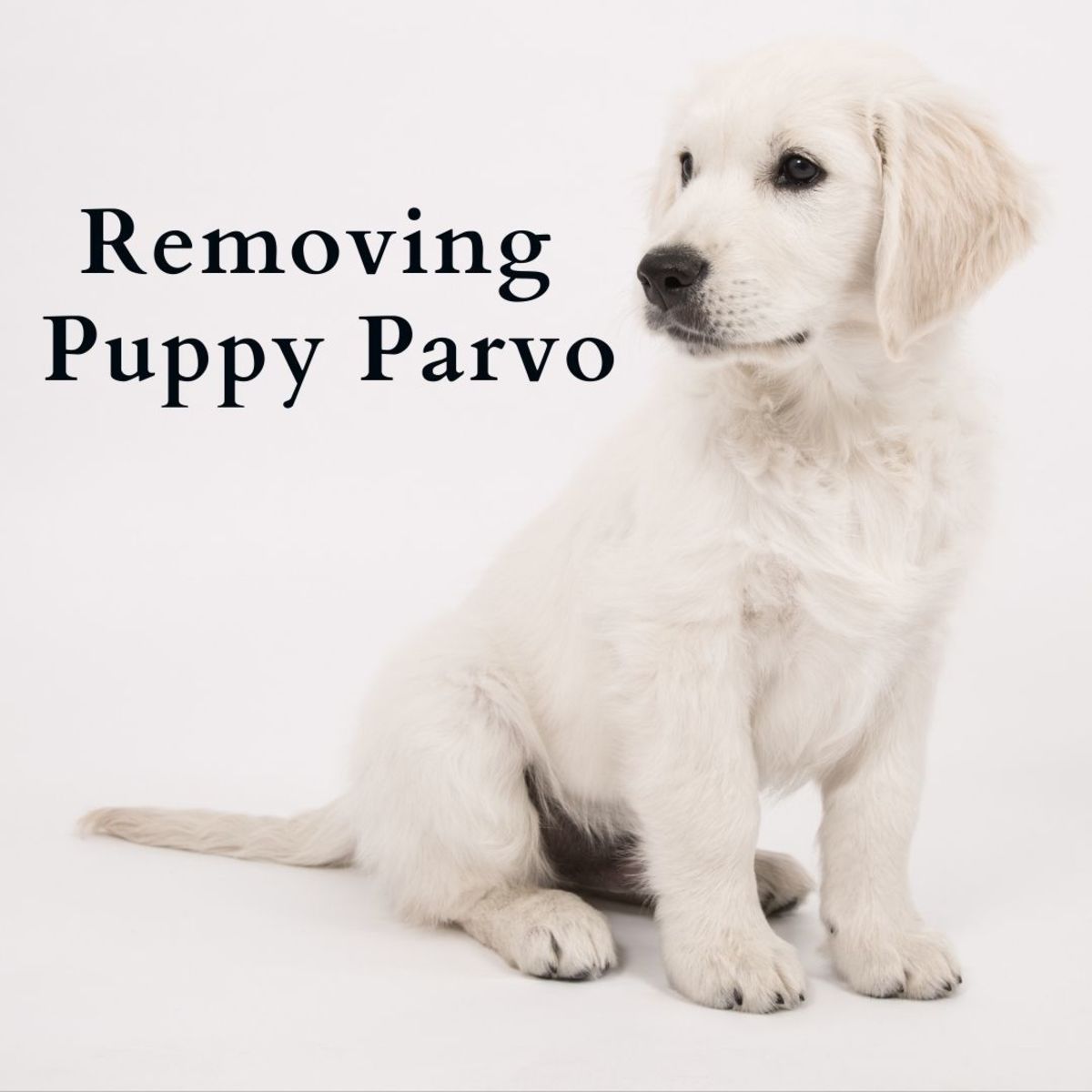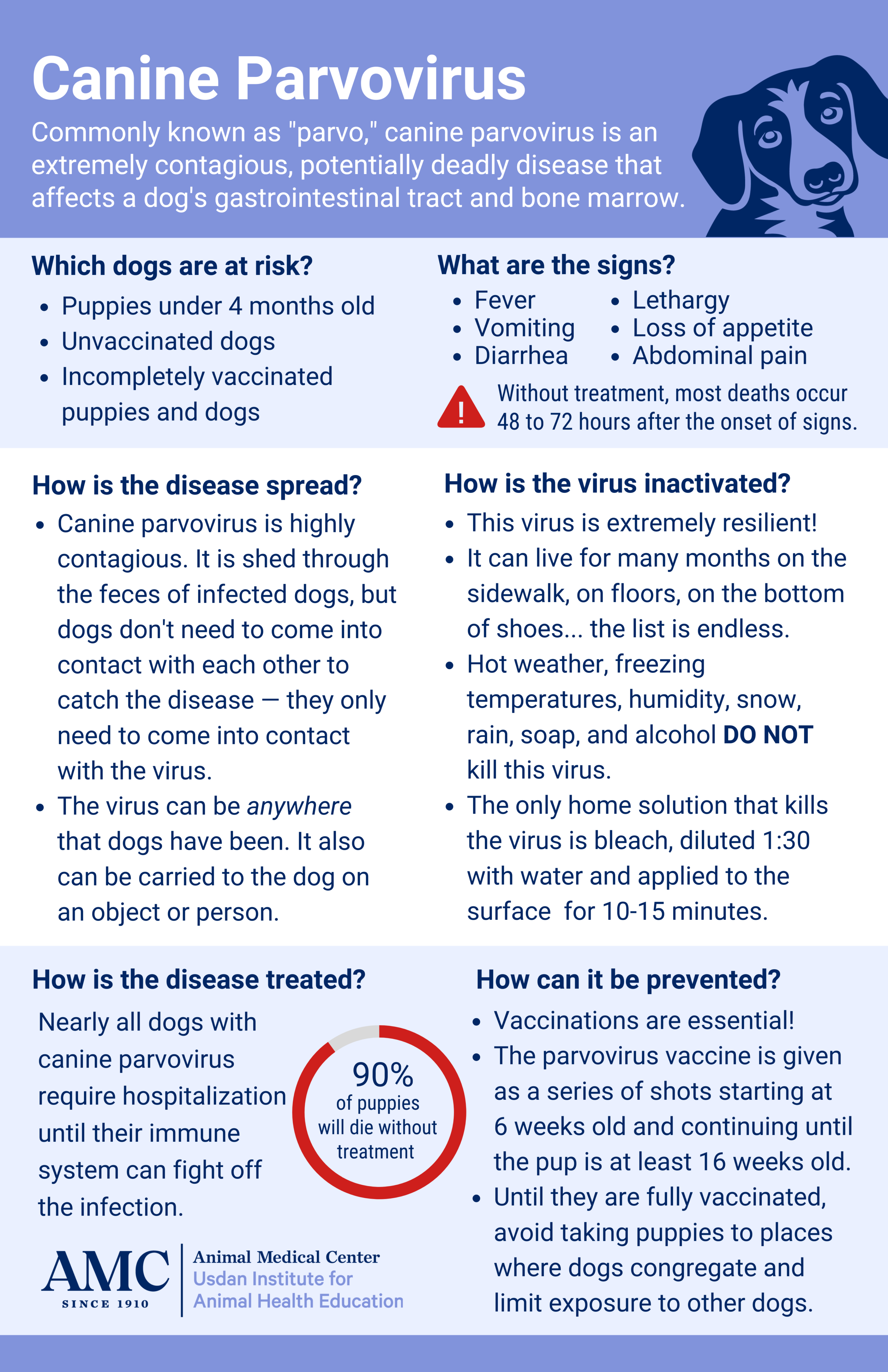
Outside of your dog the virus can survive indoors for at least one month and outdoors it can survive for many months and even a year under the right conditions. For indoor cleaning experts recommend the use of chlorine bleach to kill parvovirus.

Parvo is caused by the parvovirus which can be easily transmitted through physical contact.
How long can parvovirus live on surfaces. According to Utah Veterinary Clinics parvo can live in the environment for six months to one year. The time frame seems to depend on several factors. The time frame seems to depend on several factors.
Parvo is a highly contagious and potentially fatal disease affecting dogs. The virus is known for being extraordinarily hardy and capable of surviving in the ground for a long time. The length of time parvo can live in the environment depends on factors such as temperature amount of sunlight and humidity levels.
Answer 1 of 9. In an AAAS 1 alert they note it can survive up to 9 days That there is no specific therapy against 2019-nCoV and that prevention of infection is of particular importance in order to stem the epidemic. Parvo stays in clothes and on surfaces that have been in contact with the virus for up to nine months.
Thats why its super important to properly disinfect anything that might be infected immediately and properly. How long can parvo live outside the body. CPV is a very hardy virus and is able to survive outside of the body for up to 6 months.
It is spread through infected feces and can stay contagious on surfaces such as cages runs and especially natural areas such as grass yards gravel or mulch. How do you get parvo out of soil. How long does Parvo live without a host.
Not only is the Parvovirus very hardy it also lives a very long life for a virus and can remain within the soil once infected for anything between six months to one year after exposure. Its important to know that the parvo virus itself is extremely hardy and difficult to kill. It can live on multiple surfaces and in the ground for a long period of time.
When in the soil canine parvovirus is not dramatically affected by heat rain cold frost or. Canine parvovirus CPV is a highly contagious viral disease of dogs that commonly causes acute gastrointestinal illness in puppies. The disease most often strikes in pups between six and 20 weeks old but older animals are sometimes also affected.
A rare variant of the disease may be seen in very young neonatal puppies is. Parvo becomes less infectious with time. If the virus stays at room temperature for three months it should become less potent.
It is however generally an extremely strong virus. It can stay alive for six months inside of a refrigerator and for a couple weeks at temperatures of 100 degrees. Candida albicans as the most important nosocomial fungal pathogen can survive up to 4 months on surfaces.
Persistence of other yeasts such as. The longer a nosocomial pathogen persists on a surface the longer it may be a source of transmission and thus endanger a susceptible patient or healthcare worker. Parvovirus 1 year 118.
Outside of your dog the virus can survive indoors for at least one month and outdoors it can survive for many months and even a year under the right conditions. When and for how long is a person able to spread the disease. People with fifth disease appear to be contagious during the week prior to the appearance of the rash.
By the time the rash is evident the person is probably beyond the contagious period. People who are immunosuppressed or who have certain anemias may be contagious for a longer period. On certain surfaces such as copper the virus survived for hours rather than days.
No functional virus was found on cardboard after 24. In a dark moist environment parvo can live for years but getting rid of parvovirus in a reasonably tidy home is not as daunting as it might seem. Just cleaning the environment thoroughly helps a lot.
If you remove the virus by cleaning you dont have to worry about killing it with a disinfectant. The length of time varies. Some strains of coronavirus live for only a few minutes on paper while others live for up to 5 days.
Parvo is caused by the parvovirus which can be easily transmitted through physical contact. If an infected puppy or anyone who has recently been in contact with the virus moves through your home and touches the carpets or walls the virus could survive there for months so thoroughly cleaning all surfaces is a good idea. Be informed and proactive.
Recovered dogs can shed parvovirus for up to 2 weeks after illness. It is best to keep your dog away from dogs who have been recently infected with parvovirus. Vaccinate puppies to prevent infection with parvovirus - this is especially important for puppies that will have a high level of dog-to-dog contact.
To kill canine parvovirus on hard non-porous surfaces prepare a disinfecting solution of ¾ cup Clorox Regular Bleach 2 and one gallon of water. Pre-wash the areas and then mop or wipe with the disinfecting solution. Let stand for ten minutes then rinse thoroughly and air dry.
Either of these can be used in carpet cleaners on contaminated carpets and furniture always check first to test for staining. Independent studies have repeatedly shown that quaternary ammonium disinfectants eg. Triple Two Rocal do not reliably kill parvovirus in spite of repeated reformulation and label claims of efficacy.
For indoor cleaning experts recommend the use of chlorine bleach to kill parvovirus. To work its most effectively the bleach should be dilute with the correct measurements being 1 part of bleach to 30 parts of water. This solution is highly effective at killing parvovirus on hard surfaces.
The virus can persist in the environment for up to one year including on the surface of food bowls bedding and litter trays. The incubation period is between two and 14 days. Clinical signs of the virus are usually visible within five to seven days.
Can progress in hours to a moribund state without having any gastrointestinal signs. Parvovirus shedding in feces starts within 4 days of exposure so that infected dogs and cats in the incubation period are already contagious prior to onset.